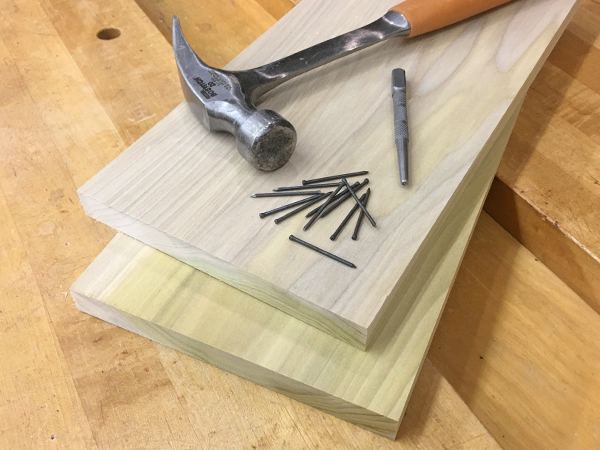
I have a corner shelf that is coming apart. It was built with cross-grain construction. I want to rebuild it and was hoping you could help me do it right. Each shelf consists of three pieces held together with a batten set in a dado. The top boards are secured to the batten with nails driven through them, and also possibly glue. Each board has come apart. Would it be better to put pegs into elongated holes, and only glue in the center board and let the ends float? It was built in the 1950s by my father-in-law and I would like to save it. Thanks for any advice you have. – Bob Ballerman
Tim Inman: Well, I’m afraid you’re beat before you start, as my dad would have said. There is just no way to fasten cross-grained wood without having it move or destroy itself. If you encase the whole thing in epoxy or plastic, it will probably warp. So, there are just not any really good choices here for you.
You are going to have to compromise something to preserve this shelf. With a good attitude, I see no reason the shelf cannot continue to carry those good memories you want kept. But, “perfect is the enemy of good” as they say. You are on the right track to think in terms of securing the pieces by anchoring in select spots. Let the wood move, but encourage it to move where you want it to move. Maybe some loose-fitting gaps are OK. Maybe you could make almost paper-thin “veneer” out of the battens so the battens don’t have the strength to destroy the joints. This involves some skill to hide your deceptive fakery and make everything look right, but it might help. The paper-thin batten pieces will most likely tear apart lengthwise, but then the sacrifice would be in the battens, not the shelf board pieces or the joints. Compromises, compromises. Good luck!
Chris Marshall: I’m going to apologize right out of the gate, Bob, for scratching my head over your project. While it only has four parts, I’m still trying to visualize how your shelf works. (A photo would really be worth a thousand words here.) So, I’ll offer just a couple of general comments. Cross-grain joints in solid wood can be problematic, as you already know, if nothing can “give” when wood movement occurs. But, by the same token, nails may actually have been a decent choice for assembling these batten joints, because nails will “give” a bit by flexing when the wood moves — provided there are only a few nails. Glue isn’t as forgiving, however. If your father-in-law both glued and nailed the shelf parts together, it’s possible that glue is what caused them to self-destruct when expansion and contraction occurred.
You might try just reassembling the same parts and only using nails to secure them this time. If your goal is to keep this project as original and “heirloom” as possible, a few brad nails and careful reassembly might be the “minimum impact” approach to try.





